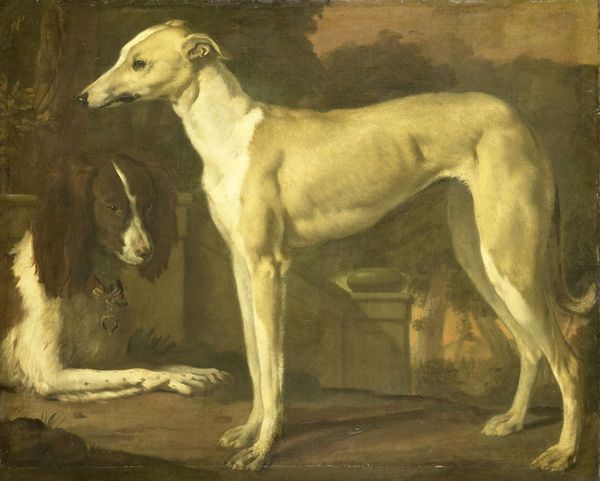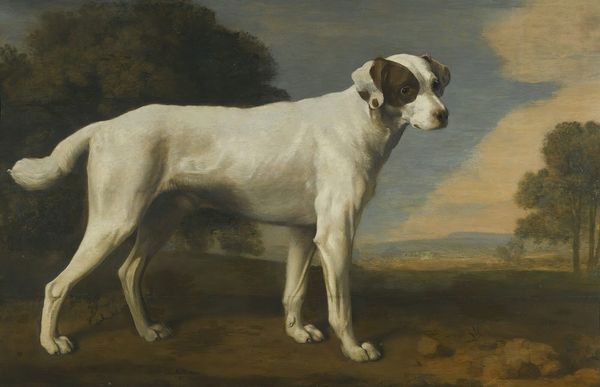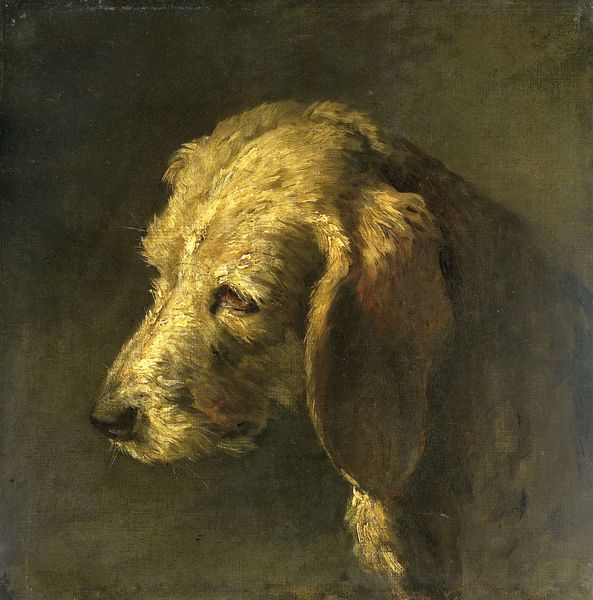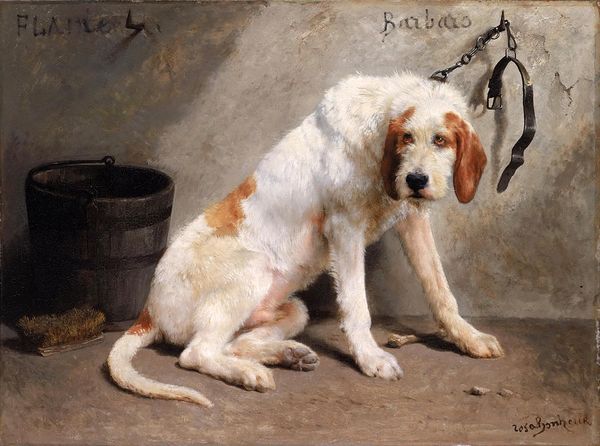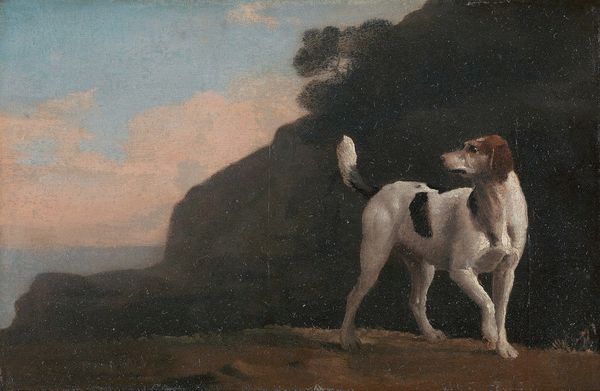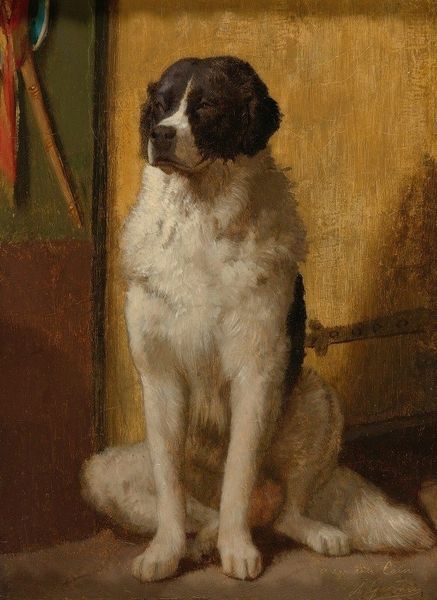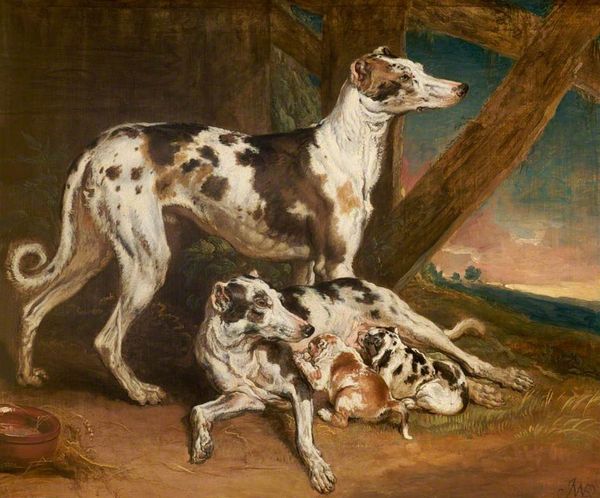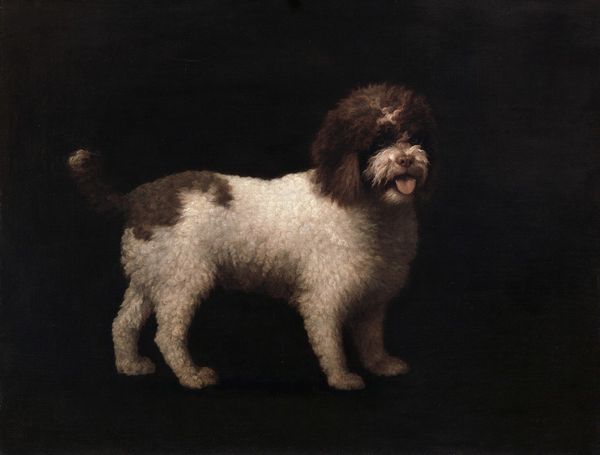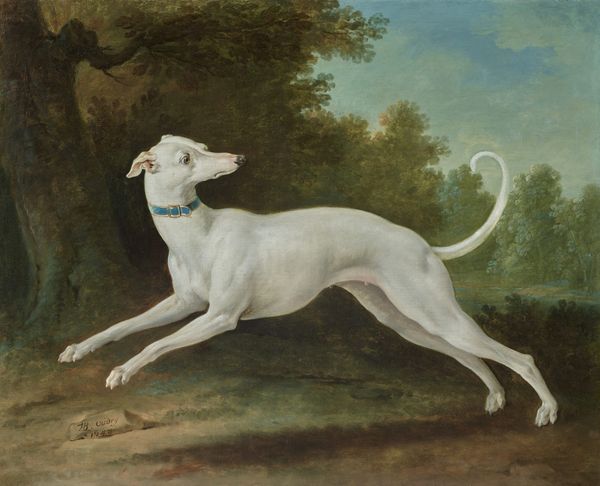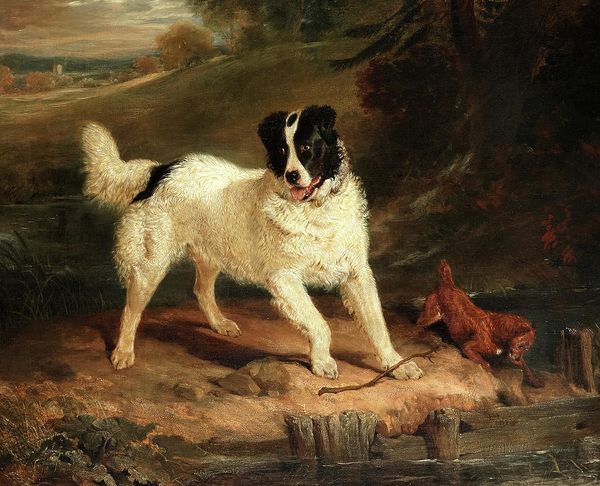
painting, oil-paint
#
portrait
#
animal
#
painting
#
oil-paint
#
dog
#
landscape
#
oil painting
#
animal portrait
#
genre-painting
#
realism
Copyright: Public domain
Editor: This is Gustave Courbet's "Dog from Ornans," painted in 1856. It’s an oil painting of a hunting dog, standing alert against a fairly bleak landscape. I find it strikingly straightforward; not at all sentimental. What do you see in this piece, beyond just a portrait of a dog? Curator: Beyond the surface, this painting operates as a potent symbol of class and societal structures during Courbet’s time. Consider the Realist movement he championed, which aimed to depict subjects without idealization. This dog isn't a pampered lapdog; it’s a working animal, likely a hunting dog, embodying labor and the rural environment. How does Courbet's focus challenge the traditional hierarchies in art? Editor: Well, I guess at the time, most animal paintings would be commissioned portraits of prize pets. This seems much more grounded, somehow. Almost confrontational, even though it's “just” a dog. Curator: Precisely! By centering the "common" dog, Courbet subtly critiques the elitism embedded within academic art. He elevates the everyday, disrupting prevailing norms. Consider, too, the gendered aspects: Hunting, often associated with masculinity, links this canine figure to power dynamics in 19th-century France. Where do you think that kind of symbolism lands for modern audiences? Editor: That makes sense. Today, it feels like a reflection on how we value certain kinds of labor or even certain breeds over others. The dog has a job to do, and its value is tied to that. Curator: Exactly! Courbet's realism doesn’t merely mirror the world; it actively interrogates it. It encourages us to question whose stories are told and whose are excluded. It challenges us to understand how social status influences what we perceive as beautiful or worthy of artistic representation. Editor: So, looking at a dog portrait makes me think about how we still grapple with issues of class and labor representation today, that's pretty powerful. Curator: Indeed. Art, even seemingly simple portrayals, has the capacity to reflect and reshape our understanding of societal norms and values.
Comments
No comments
Be the first to comment and join the conversation on the ultimate creative platform.
